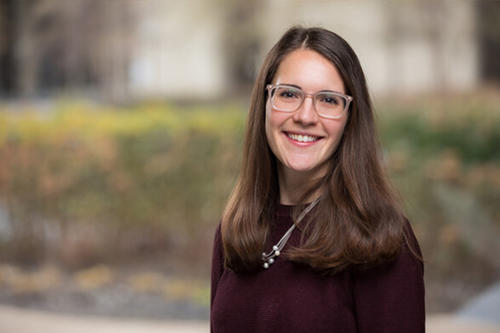
Dana Carroll believes in the power of partnership.
As an epidemiology graduate student, she first learned of the undue toll commercial tobacco takes on Native American communities. In Minnesota, for example, American Indian and Alaska Native people are three times more likely to smoke cigarettes than other residents, and their risk of developing lung cancer is more than double that of any other racial or ethnic group in the state.
Carroll thought existing smoking cessation programs could be altered to better serve American Indian people who wanted to quit, but she was also aware that generations of systemic oppression and neglect have contributed to mistrust in research among some American Indian communities.
“I remember thinking, ‘I would really be honored to work alongside American Indian communities in their pursuit for reducing smoking,’” Carroll says. “I felt like I could bring some expertise to the table as well as honor the community's interest and their own expertise.”
That’s exactly what she’s doing today as an assistant professor in the U of M’s School of Public Health. Along with Dorothy Hatsukami, director of Tobacco Research Programs at the U’s Masonic Cancer Center, Carroll is working with American Indian tribes to understand what’s fueling commercial tobacco use and to develop community-driven approaches to reducing the substance’s burden.
Too often, Carroll says, research involving Native Americans has not benefited their communities. Instead, results are published and the people who are most affected by the findings don’t see any meaningful change or receive any actionable advice.
That’s why she spent two years engaged in “conversations, discussions, and trust building” with members of a Minnesota tribe before beginning a collaborative study. Both Carroll and the tribe wanted to make sure trust was established and that the study and results might lead to a meaningful reduction in commercial tobacco use in the community.
Carroll and the tribe wanted to know whether nicotine metabolism—which is largely based on a person’s expression of the CYP2A6 gene—might be part of the reason why some Native American people become addicted to cigarettes, have a harder time quitting than others, and are at increased risk for lung cancer.
A personalized approach
Although the study is ongoing, Carroll says the initial findings support their hypothesis that some Native Americans metabolize nicotine faster than others, which is associated with greater addiction to cigarettes. They also provide clues about which cessation treatments could work best.
Other research has shown that for people with a slower nicotine metabolism, standard replacement therapy—like nicotine patches or gum—works best. For those with a faster nicotine metabolism, however, the cessation medication varenicline tends to be more effective.
Carroll would like to expand the nicotine metabolism study to more tribes in Minnesota and use the results to potentially inform community-specific tobacco cessation programs.
“We want the community to really feel a sense of ownership and engagement,” Hatsukami adds. “For community members to say, ‘This is what we need,’ and to have their voices heard.”
Carroll agrees. She says trust and collaboration are key to reducing the rate of smoking in Native American communities. “We’re making it really this beautiful, equal partnership,” she says. “It’s really a win-win.”
- Categories:
- Health
- American Indian
- Health conditions
- Population health




